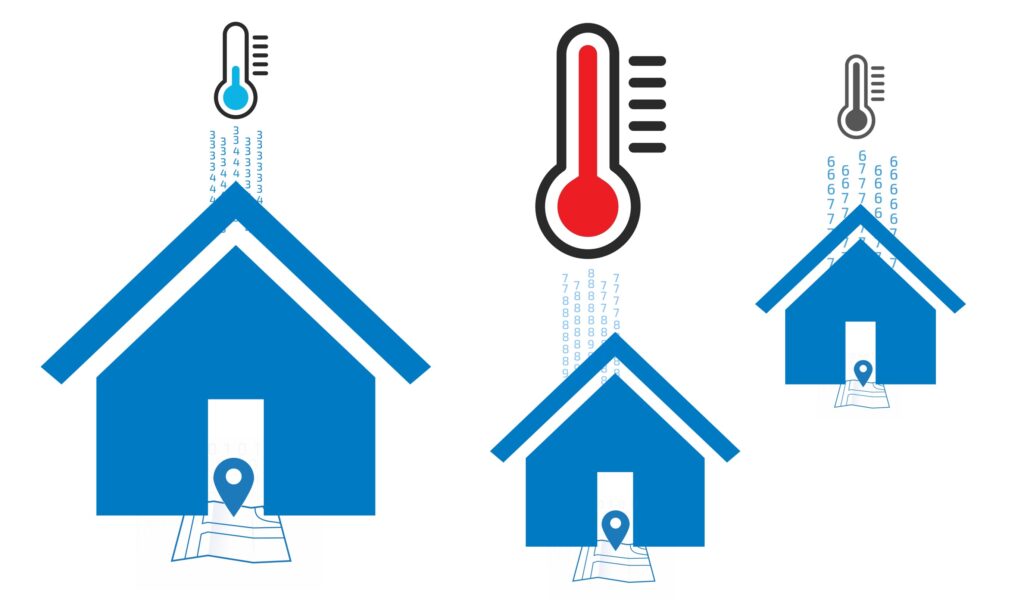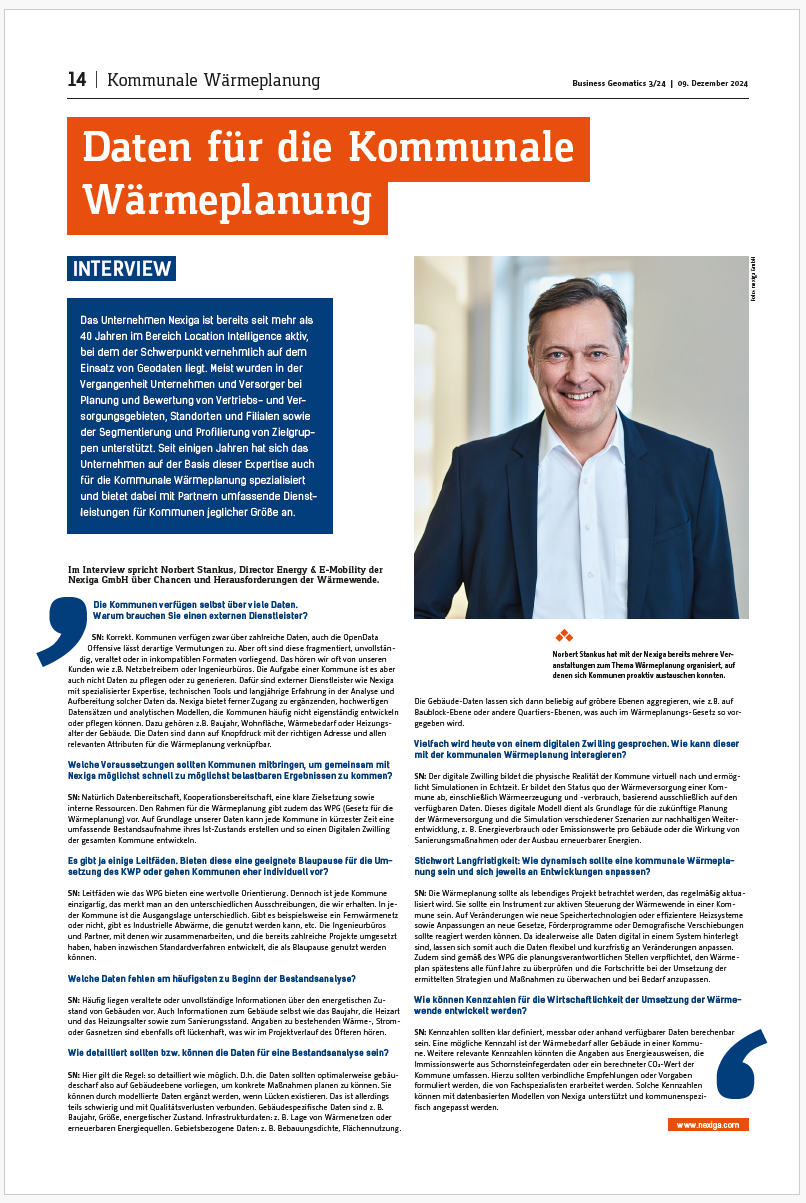Opportunities and challenges of the heating transition
In this interview, Norbert Stankus, Director Energy & E-Mobility at Nexiga GmbH, talks about the role of external service providers in municipal heat planning.
Although local authorities already have a lot of data, it is often fragmented, incomplete or in incompatible formats. This is why they are sometimes supported externally with tools and high-quality data sets in the necessary processes. For example, building data such as year of construction, living space or heating age is used to create digital twins of the municipalities that replicate physical reality and simulate scenarios.
Successful collaboration requires municipalities to be willing to provide data, be able to cooperate and have clear goals. Guidelines such as the Heat Planning Act (WPG) provide orientation, but each municipality has its own individual challenges, for example with regard to the condition of the infrastructure or missing data. Building-specific information and regular updates are essential for precise heat planning. Heat planning should be dynamic in order to be able to react to new technologies, legal changes or demographic developments.

Key figures such as heat demand, energy consumption or CO₂ emissions play an important role in assessing economic efficiency. Nexiga supports municipalities with data-based models that can be adapted locally. The aim is to plan and implement the heating transition effectively.
The interview
Norbert Stankus answered questions in the special issue of Business Geomatics on the subject of "Municipal heat planning", issue 12/24.
-
Local authorities have a lot of data themselves. Why do you need an external service provider?
Correct. Municipalities do have a lot of data, and the OpenData Offensive also allows for such assumptions. However, this data is often fragmented, incomplete, outdated or available in incompatible formats. We often hear this from our customers, such as network operators or engineering firms. However, it is not the task of a municipality to maintain or generate data. This is what external service providers such as Nexiga with specialized expertise, technical tools and many years of experience in the analysis and preparation of such data are there for. Nexiga also offers access to supplementary, high-quality data sets and analytical models that municipalities are often unable to develop or maintain independently. This includes, for example, the year of construction, living space, heat demand or heating age of buildings...
Norbert Stankus







